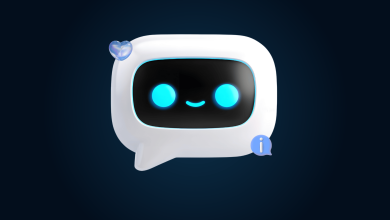The debate sounds simple on the surface yet hides messy truth. Brands want captions that stop thumbs and spark clicks. Teams want speed and consistency without burning budgets or weekends. Leaders want proof that words move numbers, not just vibes and coffee. Somewhere in that tug of war sits a real question. Do AI caption generators beat human writers in the channels that matter.
Let’s set a working frame before we pick sides too fast. A good caption must earn attention, hold it, and push a next step. It should match brand voice without sounding robotic or stiff. It should respect platform nuance without copying stale playbooks. It should also be fast enough to support the content treadmill. Growth does not pause while you chase a perfect adjective.
I have tested both camps
I have tested both camps across different brands and formats. I tried Instagram carousels, TikTok shorts, LinkedIn thought bites, and YouTube community posts. I used polished product announcements and scrappy behind the scenes clips. I also tested new market launches where no past data existed. The goal was simple and measurable. Which author drove more reach, engagement, and conversion.
Here is the headline that marketers like to hear. AI wins on speed and scale, while humans win on nuance and soul. That line is mostly true and still not complete enough. Results vary with your brief, your audience, and your tolerance for risk.
Results also depend on your workflow and review layers. A sloppy process will handicap both teams.
What AI caption generators do incredibly well
AI delivers volume at a pace humans cannot match without burnout. Give it a short brief and a tone rule, and it can output fifty variants. It is tireless, consistent, and surprisingly decent with platform constraints. It can learn your tag sets and your common calls to action.
It can also rewrite in formal, playful, or minimal styles on command.
AI thrives when you need testable variety fast. Think product drops across multiple countries and time zones. Think daily reels where freshness beats poetry by a mile. AI generates options that let you A B test quickly. You can filter losers and double down on winners. A good scheduler then ships the winner at the best send time.
AI also helps smaller teams punch above their weight. Startups often lack a full time brand writer. They still need captions for five networks every week. AI gives them a floor that is good enough to ship. Iteration then lifts quality to a respectable ceiling. The cycle repeats until the baseline becomes surprisingly strong.
Sometimes AI even surprises the sceptics. It can surface hooks you would not try on your own. It can remix headlines into tighter first lines. It can shorten long ideas without killing meaning. It can also keep tone guardrails when those guardrails are crystal clear. The trick is to feed consistent examples before you ask for magic.
One more practical upside deserves a note. AI keeps logs of prompts, outputs, and edits. That audit trail is a gift when legal or compliance asks questions. It also helps new team members learn the voice quickly. Documentation rarely writes itself. The machine leaves breadcrumbs by default.
Where human writers still run the table
Humans shine when context is messy and emotions run high. If your brand navigates sensitive news or community pain, pick humans. If you work in regulated fields, you need human judgment. Tone requires social awareness that AI still imitates, not understands. A caption can be technically correct and culturally tone deaf. That is a fast route to public apology posts.
Humans also carry brand memory in a way AI does not yet match. They recall the jokes that landed and the jokes that hurt. They track the slowly evolving voice of a founder. They spot when an inside reference will feel forced or self congratulatory. They know when silence communicates more respect than a clever line. That is learned craft more than algorithmic pattern.
Humans think in scenes
There is also the matter of narrative. Humans think in scenes and arcs, not just lines. A campaign works as a sequence of moments across channels. The caption is one beat among many beats. A writer hears rhythm across beats and writes to that rhythm. AI usually writes within the single prompt, not the full arc.
Let us talk about the invisible skills that matter in captions. Human writers do micro research as they write. They verify a stat, confirm a spelling, and check a product detail. They notice a possible claim that needs qualification. They know when a promise crosses from bold to misleading. That quiet diligence saves fines and reputations.
Finally, authenticity still reads human in many categories. Audiences forgive imperfect grammar if they can feel a person. They reward vulnerability, brevity, and warmth. They also reward specific sensory details that AI often glosses over. Specifics smell like truth. Vague statements smell like filler.
I once asked an AI to write a self deprecating founder caption. It apologized for the inconvenience and filed a support ticket.
How to compare performance with real numbers
The fairest way to compare is a matched test. Use the same asset, audience, and distribution window. Write multiple AI variants and multiple human variants. Rotate them fairly across time slots to avoid timing bias. Measure the same metrics across all variants. Keep the sample size large enough to trust.
Track three layers of outcomes for a clean picture. Layer one is reach and impressions at the surface. Layer two is engagement through likes, comments, and saves. Layer three is the actual business action. That might be an email signup, a trial start, or a sale. Do not crown a winner until layer three is known.
Add qualitative review to the final readout. Comments reveal tone perception better than likes alone. Did people tag friends or ask follow up questions. Did anyone misinterpret a claim or feel pushed. Did the caption invite conversation or close it down. Numbers tell truth but they do not tell all of it.
I run iterations in weekly sprints for sharper learning. Day one is ideation, day two is drafting, day three is scheduling. Days four and five collect early signals. Week two promotes winners with real budget. The shape repeats each week until the average climbs. The winners from last month become your new control set.
A practical workflow that combines both camps
Here is a simple process you can adopt next week. It respects craft and speed at the same time. It allows testing without drowning in options. It also fits teams of one or teams of ten.
- Define your campaign arc in three to five beats.
- Document tone rules with three clear examples.
- Draft two human captions per beat with a rationale.
- Generate six AI variants per beat with explicit constraints.
- Edit the best three AI options to match brand memory.
- Select two human and two edited AI captions for testing.
- Schedule all four in one calendar with fair timing rotation.
- Promote the winner and archive the learning with notes.
This list is not sacred doctrine. It is a friendly default that gets results. Edit it for your team and your reality. Keep the ritual but bend the steps. Discipline beats occasional genius in content operations.
Cost, speed, and the hidden tax of context
AI lowers the marginal cost of each additional caption. That matters when you produce content at scale across markets. It matters when you translate and localize constantly. It also matters when trends burn fast and novelty wins. Speed becomes strategic, not just convenient.
Humans still carry a context tax that AI does not. They need onboarding and time to absorb product nuance. They ask questions that slow early drafts but prevent late mistakes. That friction can feel expensive. The expense often pays back over the quarter through fewer brand missteps. You can feel the savings only if you track them.
Blend both to balance the ledger. Use AI for volume and first passes. Use humans for final passes and tricky narratives. Use a scheduler to run the calendar without chaos. Use analytics to reward what performs, not what sounds clever. The blend is not a truce. It is a system.
We really think that using a social media scheduler in general for your social media management tasks is the best thing you can do as a marketer, an agency or a simple influencer.
Voice, compliance, and the slippery slope of sameness
The most common risk with AI captions is sameness. The machine learns from the same ocean of public writing. It reproduces patterns that feel safe and low risk. That is why so many captions look like each other now. The safe choice becomes the invisible choice. Invisible captions rarely make money.
Humans can also drift toward safe and bland. The difference is that a human can rebel on purpose. They can break the pattern and carry the consequence knowingly. They can take a stand that aligns with brand courage. AI will avoid that move unless prompted aggressively. Even then it may hedge.
Compliance adds another wrinkle worth naming. Some sectors require disclaimers and precise claims. AI can forget legal phrases unless you enforce them. Humans will remember when trained and reminded. The fix is simple though not glamorous. Build compliance snippets and require their presence. A checklist is unsexy and extremely effective.
I have seen checklists rescue beautiful ideas from last minute edits. They make room for creativity by removing fear. When teams trust the guardrails, they push harder on the gas. That is the goal of process. Not to police, but to liberate.
Platform nuance and the role of short form video
Captions behave differently depending on the surface. On TikTok, the hook line and on screen text carry more weight. On Instagram, the first line still drives much of the click through. On LinkedIn, story and credibility win over cute rhymes. On YouTube, community posts want clarity and invitation. Pretend every platform is a different room at one party.
AI does fine when you tell it the room ahead of time. Say the platform, the placement, and the audience role. Also paste two examples that performed well in your account. Without that context, you get generic claims and generic calls to action. With it, you get solid scaffolding that humans can refine quickly.
Humans notice micro trends in each room faster. They sense when a meme format has peaked. They spot the tiny cultural rule that outsiders miss. They intuit when a plain caption will let the video breathe. That intuition comes from immersion more than training. You cannot shortcut immersion with clever prompts.
Brand storytellers versus caption machines
It helps to separate two jobs that we often blend. One is storytelling at the campaign level. The other is caption writing at the post level. AI can support both, but excels more at the second. Humans can do both, but shine more at the first. If you know which job you are solving, you pick the right tool.
The storyteller chooses the arc, the reveal, and the stakes. The caption writer gets the click and guides the next step. Use AI to flood the zone with ideas and formulas. Use humans to craft the arc and break patterns intentionally. Use this pairing to move fast without sounding like everyone else.
I like to think of captions as percussion in a band. The drummer does not carry the melody. The drummer sets the pace and the groove. AI can keep time perfectly for hours. Humans know when to pause and when to hit hard. Great bands use both discipline and feel.
So which actually performs better
If you want volume and speed on simple promotional tasks, AI often wins. It produces more testable options and discovers workable hooks. If you want trust building narratives and delicate messaging, humans usually win. They carry the weight of context that converts over months. The answer is less a duel and more a job description.
Your best results will come from a combined system. Feed AI clear guardrails, great examples, and tight prompts. Let humans write the hard beats and edit the final voice. Schedule everything from one calendar so you can compare fairly. Measure outcomes beyond the vanity layer. Promote winners and document lessons with boring consistency.
That system sounds sensible because it is. It is also how fast growing teams operate quietly. They do not moralize the tool choice. They chase performance and protect brand equity. They respect craft while respecting data. They let both sides do what they do best.
Conclusion
AI caption generators are not a threat to craft. They are a force multiplier for teams that respect process. They remove the heavy lifting of first drafts and idea generation. They support large testing matrices that used to be impossible. When guided by strong examples and rules, they produce solid raw material. When left alone, they produce average.
Human writers remain the stewards of voice, judgment, and narrative. They make the brave decisions that build loyalty. They are slower because they are listening while writing. They also bring informed restraint that keeps you out of trouble. In an ideal world, they lead the arc and approve the final frame. In the real world, they still do the part that seals trust.
The winner is the workflow that blends speed with meaning. Build it, and you will publish more without sounding generic. Build it, and you will keep quality while shipping at tempo. Build it, and your captions will stop thumbs and move hearts. That is the point of the words anyway.
One last line for the road. I asked AI for a joke, and it said the meeting could have been an email.



